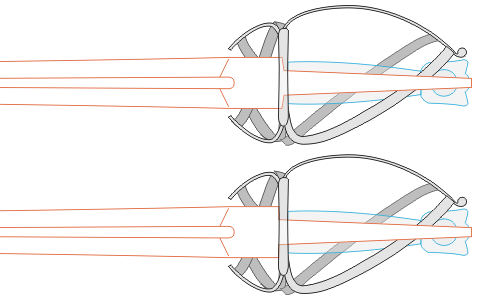I was wondering how the tang looked for a Schiavona? I've been looking at lots of images of both antiques and replicas, but it is hard to see this part because it is hidden by the crossbar, handle and pommel.
[ Linked Image ]
Figure 1. Two possible options for the tang's shoulder.
In older swords, the shoulder of the tang typically seems to be embedded somewhat into the cross guard. Is this also typically the case with schiavonas? or is the cross guard put against the shoulder of the tang?
Also, how is the pommel attached? I would guess the tang is not threaded, but I can't seen any peened end either? What attachment method is typically used?
Edit:
If it makes a difference, I'm mostly interested in Type II / Type IIa schiavonas in this case.
Regards,
J.B.

Two possible options for the tang's shoulder.